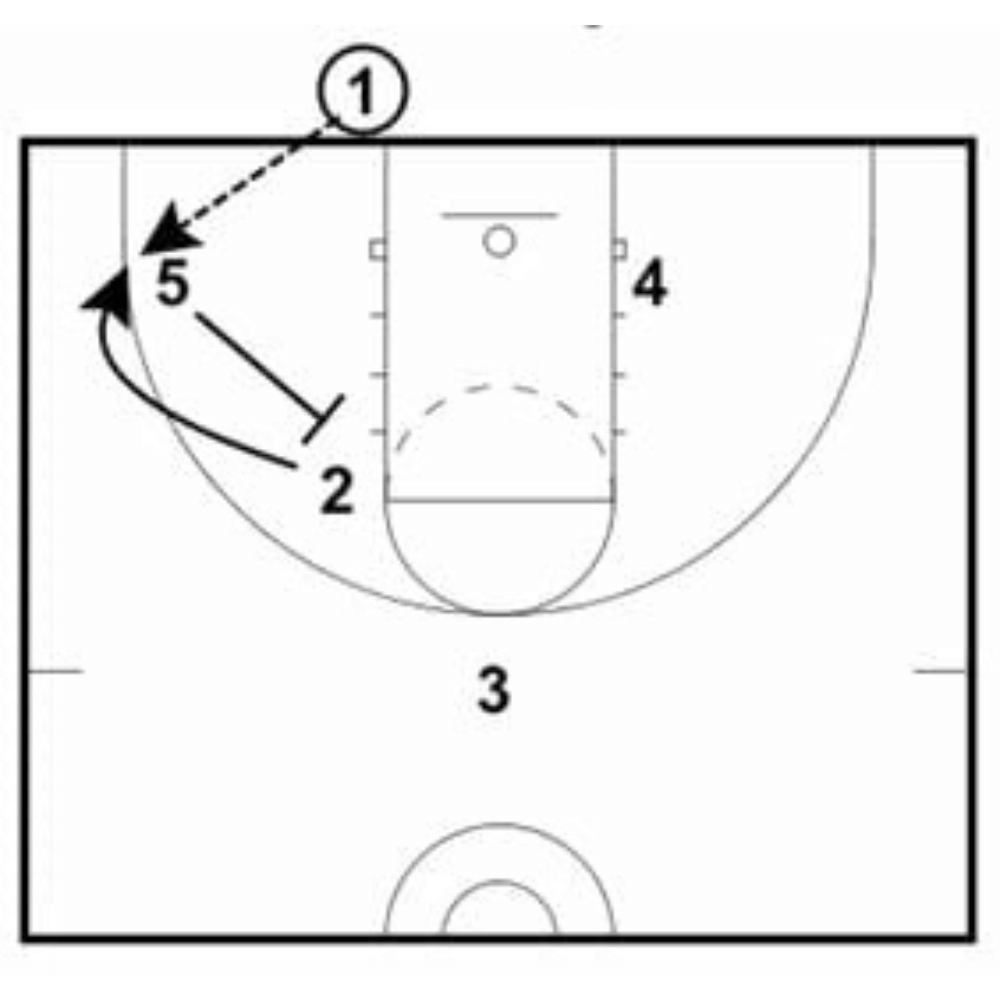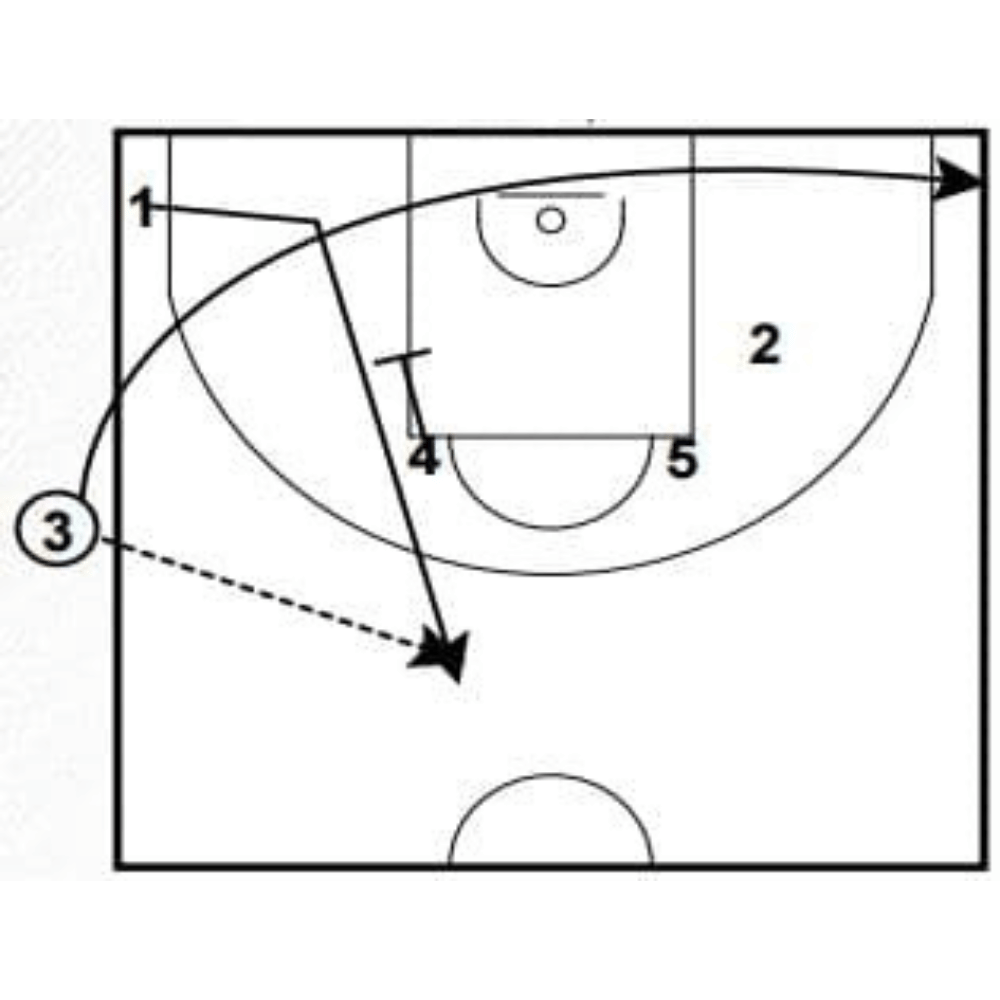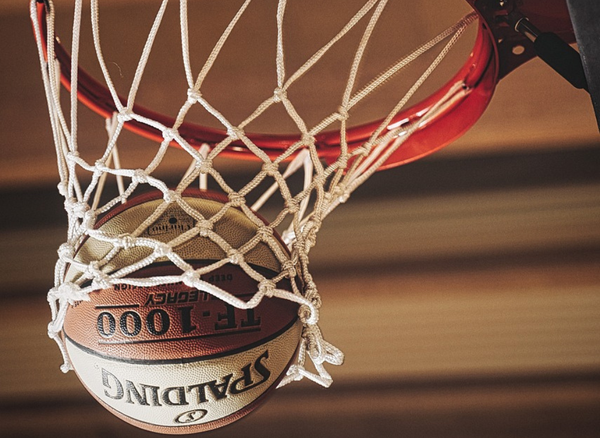Basketball isn't just a game of who can shoot the fanciest three-pointer or who has the snazziest sneakers (though, let's be honest, both help). It's also a chess match, where strategy can make or break your game. And when it comes to strategy, a nicely drawn up inbounds play is like the secret sauce to a slam dunk sandwich.
The Sneaky Art of Inbound Plays
When the game is on the line, and you've got seconds on the clock, a clever inbound play can be your secret weapon for that win. These are the moments when coaches earn their stripes, and players become legends. The key is to be as sneaky as a cat burglar on a moonless night. You want to catch the defense snoozing and hit them with a play so smooth, they'll need to watch the replay to figure out what happened.
Inbounds plays are not just about getting the ball in play; they're about creating scoring opportunities. It's like a magician's sleight of hand – while everyone's eyes are on the inbounder, it's the movement off the ball that's setting up the grand illusion.
The Choreography of Confusion
Imagine you're at a dance, but instead of busting moves to impress your date, you're there to create a diversion. That's what a well-executed in bounds play does. It's a choreographed piece of confusion, designed to leave defenders questioning their life choices. The best plays involve cuts, screens, and passes that are timed with the precision of a Swiss watch.
It's about knowing your teammates' movements as well as you know your own. When done right, it's poetry in motion; when done wrong, it's more like a toddler's first steps – a bit wobbly, but still kind of adorable.
The Spacing Odyssey
Space: the final frontier. This isn't just true for Star Trek; it's also a fundamental concept in basketball. Proper spacing is like having the right amount of cheese on a pizza – too little, and it's just sad bread; too much, and it's a gooey mess. In an inbounds play, spacing is crucial because it ensures that players have enough room to operate and that passing lanes are open.
Good spacing forces the defense to spread out, which can lead to mismatches or open players. Think of it as a game of keep-away, but instead of avoiding that one kid who always plays too rough, you're avoiding the grasp of the opposing team's defense.
Timing is Everything
They say timing is everything, and they're not wrong. In basketball, especially during
It's like trying to jump onto a moving train – do it right, and you're on your way to glory; do it wrong, and, well, let's not think about that.
Timing in basketball is about knowing when to cut, when to set a screen, and when to pass. It's a symphony where every player is an instrument, and the inbounder is the conductor. Get it right, and you'll have the crowd on their feet. Get it wrong, and you'll have the coach pulling out their hair.
The Power of Misdirection
Misdirection in basketball is like being a magician – you want the defense to look one way while you're setting up the real play the other way. It's all about the element of surprise. You want to trick the defense into thinking you're doing one thing while you're actually planning something entirely different.
This can be done through fake passes, decoy runs, or even just a well-timed glance. The goal is to get the defense to commit to stopping what they think is coming, only to realize they've been duped. It's the basketball equivalent of the ol' "look over there!" trick.
Practice Makes Perfect
As with any skill, practice is key. You can't expect to pull off a perfect in bounds play without running through it a few (hundred) times in practice. It's like learning to play an instrument – you wouldn't expect to play Beethoven's Fifth Symphony perfectly on your first try, would you?
Practicing plays helps players understand their roles, timing, and the spacing required to execute the play successfully. It's also a great time for coaches to see what works and what doesn't, sort of like a test run for their basketball masterpieces.
Communication
If practice is the paper, then communication is the glue that holds the in bounds play together. Without communication, you might as well be trying to play basketball with a football – it's just not going to work.
This communication should be both verbal and non-verbal. Sometimes a look or a gesture is all it takes to convey a message on the court. It's like being in a noisy room and still being able to understand your friend who's mouthing words at you from across the room.
The Element of Surprise
The element of surprise is your best friend when it comes to inbounds plays. It's like throwing a surprise party – the goal is to catch the defense off guard and capitalize on their momentary confusion. This can be achieved by using a play that hasn't been used in the game yet or by adding a new twist to an old play.
Surprising the defense can lead to easy baskets, which is always a good thing unless you're on the defense. Then it's just embarrassing.
The Role of the Inbounder
The inbounder is like the quarterback of an in bounds play. They're the ones who set the play in motion, and their decision-making can make or break the play. A good inbounder needs to have a clear understanding of the play, good vision, and the ability to make accurate passes.
They also need to be able to read the defense and make split-second decisions. It's like being a squirrel trying to decide which way to run to avoid getting squished – there's a lot riding on that decision.
Out of Bounds Plays from the Endline
When the ball goes out on the endline (baseline), it's not just a moment to catch your breath. It's a chance to run a baseline out of bounds play that can leave the defense scrambling.

Picture your best shooter is lurking on the opposite block, ready to spring into action. The play starts, and like a perfectly timed comedy, the defense is left looking like they've slipped on a banana peel as your shooter nails a three point shot.
Capitalizing on Sideline Out of Bounds
The sideline out of bounds play is like the sidekick that always has your back. When the ball crosses the half court line and goes out, it's time for the sideline shuffle. The inbounds pass might seem less threatening here, but with the right play, you can turn it into a scoring fiesta.

Imagine your offensive players setting cross screens like they're playing musical chairs, and suddenly, your best post player gets the ball with an open lane to score.
The Importance of Execution
Finally, execution is the name of the game. You can have the best play in the world, but if it's not executed properly, it's about as useful as a screen door on a submarine. Execution is about precision, timing, and the ability to perform under pressure.
It's the culmination of all the practice, communication, and strategy that goes into in bounds plays. When executed perfectly, it's a thing of beauty. When it's not, well, it's back to the drawing board.
FAQ Section
How often should a team practice inbound plays?
Teams should practice in bounds plays regularly, integrating them into their practice sessions to ensure they become second nature. The more they practice, the better they'll be able to execute during a game.
Can in bounds plays really make a difference in a game?
Absolutely! In bounds plays can catch the defense off guard and lead to easy scoring opportunities. They can be the difference between winning and losing in tight games.
What's the most important aspect of a successful in bounds play?
While all elements are important, execution is key. A well-executed in bounds play, with precise timing and good spacing, can be incredibly effective. It's the result of good communication, practice, and the ability to perform under pressure.
What's the most important factor in executing successful basketball inbound plays?
The most important factor is precise timing and coordination among players. Each player must know their role and execute it with precision to create scoring opportunities.
How can a team effectively counter a zone defense with inbounds plays?
To counter a zone defense, a team can use quick ball movement, player movement, and screens to create gaps in the defense and find open shots or passing lanes.
What's the role of the player taking the inbounds pass?
The player taking the inbounds pass acts as the quarterback of the play. They must read the defense, make quick decisions, and deliver an accurate pass to initiate the scoring play.
Summary
A good designed inbounds play is the secret weapon that can turn the tide of a game with an easy basket. From the baseline to the sideline, every in bounds situation presents a unique opportunity to score. By understanding the strategic placement of players, the art of the inbounds pass, and the various plays that can be executed, teams can maximize their scoring opportunities and keep the defense on their toes. Whether it's through box sets, cross screens, or exploiting the weak side, the key to mastering inbounds play is creativity, precision, and a little bit of theater. Lace up your sneakers, chalk up the playbook, and let's turn those in bounds moments into highlight reels!









